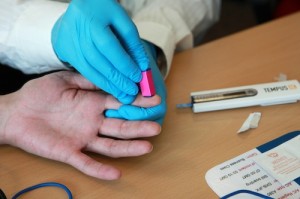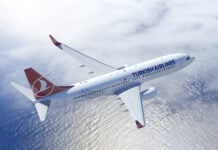Emirates invests more than US$6 million on equipment and thousands of hours in the training of crew for first-aid and emergency medical care. It is impossible to put a price tag on saving a life. Should a medical emergency occur on board a flight, attention is provided immediately by the crew and in some cases a flight diversion is required to the nearest airport for medical treatment.

That is why Emirates has invested more than US$6 million in the installation and service of its medical equipment on board, and thousands of hours in training each year, to ensure its crew is able to act effectively in the event of medical emergencies on board.
During 2014, Emirates delivered a total of 33,430 hours of medical training for cabin crew and pilots, ensuring they are equipped with the right support to assist passengers on board.

All Emirates cabin crew go through a comprehensive initial training programme which is required by the UAE General Civil Aviation Authority, as well as additional specific training for the use of on board medical equipment. This includes both practical and theory elements. The training prepares them to provide emergency medical attention for situations, and includes topics such as basic life support (CPR); medical conditions including asthma, heart disorders, seizures and allergic reactions; trauma-related topics and even emergency childbirth, amongst others. Pilots also attend training sessions covering topics such as Hypoxia, Malaria, Dengue, Trauma, CPR and choking and occupational health issues.
Medical diversions
On the rare occasion that a medical diversion does occur, the process begins when a member of cabin crew is alerted by, or discovers a passenger who appears to have medical issues. The crew would first determine the severity of the situation, then inform the pilot and consult with MedLink, a US-based, 24/7, satellite medical advisory service that provides the flight crew a direct connection with specialist aviation medical consultants, who can help assess the passenger’s situation in real-time.
“In 2013 and 2014, we diverted over 100 flights for medical emergencies, costing more than US$12million. When a medical diversion does happen, we work hard to get the affected passenger access to medical attention as quickly as possible in coordination with the local authorities, and at the same time try to minimise disruption for other passengers affected by the diversion. Unplanned en route diversion of a flight has its own challenges and logistics, and in a number of cases extended delays are experienced,” said Adel Al Redha, Emirates’ Executive Vice President and Chief Operations Officer.
“Aside from the crew on board, a full team on the ground swings into action to rebook passengers who may miss their flight connections, make arrangements for the aircraft to be met by medical services, organise ground refuelling and file a revised flight plan. This becomes more challenging at a time when our Ground team has to support a turnaround of an aircraft at a station that is not an Emirates scheduled destination. Diversions are costly and operationally disruptive, not to mention an inconvenience for the other passengers. A single diversion can cost up to US$200,000 but when a life or a passenger’s safety is at stake, none of that matters. We will never compromise on the safety of our passengers and crew,” he added.
In addition to MedLink, onboard crew are further assisted by the state-of-the-art Tempus IC, a system that allows the crew onboard to transmit vital medical data of the affected passenger – such as heart rate, blood pressure, ECG, voice and video – from the aircraft to MedLink using satellite communications. The MedLink team will then advise the crew on how best to treat or alleviate the patient’s condition, and also advise whether a medical diversion is necessary, or if the affected passenger could be treated at the final destination. MedLink will also advise the closest airports the flight could divert to, based on the medical services available at those points.
After consultation with MedLink and the cabin crew, the pilot makes the final decision on whether the flight should divert, taking into account the specific requirements of the aircraft and ensuring that it is compatible with the diversion destination airport. For instance, not all airports can handle wide-body aircraft.
“Once the affected passenger has been accompanied off the aircraft for medical attention, the aircraft is usually refuelled and en route to its original destination within one to two hours,” said Al Redha.
As part of their initial training programme, all ground staff and cabin crew are trained to be observant during the boarding process to identify any individuals who may not be fit to travel. If there is a concern about a customer’s fitness to travel, the crew can contact MedLink and a decision can be given within minutes based on professional medical advice, thus reducing the likelihood of a medical emergency in flight.
Passengers requiring assistance
While Emirates has qualified crew to deal with emergency situations on board, passengers too should ensure that they are fit to fly, and inform the airline in advance of travel if special medical arrangements are required.
Customers with certain existing medical conditions are required to complete a form with their medical details, which is reviewed by the Passenger Medical Clearance Unit. In some cases, additional support such as supplemental oxygen or an accompanying doctor or nurse may be required.
–
__________________________________________________________
______________________________________________________________________




